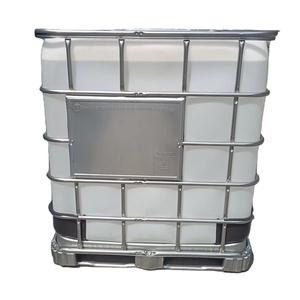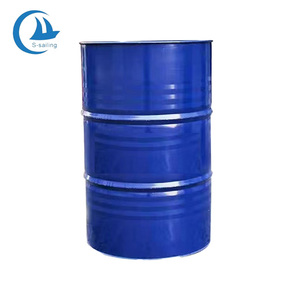
All categories
Featured selections
Trade Assurance
Buyer Central
Help Center
Get the app
Become a supplier

(223 products available)

























Phosphoric acid esters come in several types, and each variation addresses specific industrial requirements. The diverse viscosity and solubility range of these esters makes it easier to select the right one depending on the intended application.
Here are some of the common types:
Monoalkyl Phosphate Esters
These are formed by esterifying one alkyl chain to phosphoric acid. Therefore, they are termed as monoalkyl phosphates. Phosphate esters of this kind are typically water-soluble and are used as emulsifiers and anti-corrosion agents in such industries as food and cosmetics.
Dialkyl Phosphate Esters
Two alkyl groups bond to the phosphate molecule, forming dialkyl phosphate esters. Due to their greater hydrophobicity, these compounds tend to be more oil-soluble than water. Common applications include lubricants and hydraulic fluids in the manufacturing and automotive sectors.
Trialkyl Phosphate Esters
Trialkyl phosphates are produced when three alkyl groups bind to the phosphate group. This structure often results in high viscosity but excellent stability to chemicals and heat. Those properties make trialkyl phosphates prime candidates for use in the agriculture sector for fertilizer production and soil conditioning.
Alkoxy Phosphates
Alkoxy phosphates contain alkyl and ether components bonded to the phosphate. While these esters have limited solubility, they offer excellent emulsifying and wetting properties. Their main applications are in detergents, industrial cleaners, and other products for surface treatment.
Biodegradable Phosphate Esters
Industrial demand has recently resulted in the emergence of alkyl phosphates that are easily biodegradable. These products degrade quickly in natural environments without harming the ecosystem. People use them mostly in environmentally friendly formulations in the agriculture and food industry.
When buyers know how phosphoric acid ester is applied in various industries, they increase their chances of using the chemical product effectively.
Lubricants and Greases
Esters of phosphoric acid are used to provide lubrication and stability in a number of mechanical systems. Due to their exceptional thermal stability and ability to protect against wear, these esters are integrated with hydraulic fluids, high-performance industrial lubricants, and aerospace products.
Some lithium complex greases used in automotive parts rely on MP Tri(Nonyl) Were phosphate esters for enhanced anti-wear and seizure resistance.
Surface Treatment and Coatings
The electroplating and coating processes use phosphoric acid esters, particularly as corrosion inhibitors. In the automotive and electronics industries, for instance, these esters form protective layers that prevent oxidative damage and enhance product longevity.
Plastic Additives and Stabilizers
Phosphate esters are added to plastics, especially polyvinyl chloride (PVC), as processing aids and stabilizers. They help increase thermal stability, which in turn helps enhance the durability and safety of such products as cables, pipes, and construction materials exposed to high temperatures.
Agricultural Chemicals and Fertilizers
In agriculture, phosphoric acid esters are used to improve the efficacy of fertilizers and pesticide formulations. These esters act as surfactants, enhancing the absorption of chemical treatments through plant membranes.
Industrial Cleaning Agents
Antistatic and desmearing agents used in metal cleaning, especially after metalworking activities, contain phosphoric acid esters. These esters are effective in removing oils and residues while also protecting against flash rust.
The properties of phosphoric acid ester typically vary based on the raw materials used during synthesis and the intended industrial application. Knowing these features helps business owners decide whether or not to purchase the chemical based on its effectiveness in various tasks.
Check out some common features and specifications of these products:
Molecular Structure
The unique molecular structure of phosphoric acid esters typically defines their properties and functions. The number of alkyl chains or groups attached to the phosphate functional group determines whether the ester will be a mono-, di-, or trialkyl phosphate.
Viscosity and Solubility
Phosphate esters are known for their diverse viscosity and solubility. People can find some that are highly viscous and soluble in water, while others are less soluble and have oil-like consistency. This property variation enables manufacturers to select the proper phosphoric acid ester based on the desired formulation.
Surface Activity
Surface activity is a hallmark property of phosphoric acid esters. The esters tend to aggregate at the surface/interface of liquids, reducing surface tension. Consequently, this property makes them effective as emulsifiers, wetting agents, and surfactants in various formulations.
Thermal Stability
Among other things, the thermal stability of these esters makes them suitable for high-temperature applications like lubricants and hydraulic fluids. Furthermore, this stability prevents ester degradation, ensuring long-lasting performance in industrial applications.
Biodegradability
Apart from their efficacy, some phosphoric acid esters stand out because of their eco-friendliness. These esters readily degrade in natural environments without toxic effects on biological entities. This property makes them a preferred option for companies prioritizing environmental sustainability.
When it comes to choosing the right phosphoric acid ester, buyers should consider a couple of factors. The ester should have the desired effect on businesses. Getting such an acid will depend on several factors, such as the ionic nature of the esters, solubility, compatibility with other formulation components, and thermal stability. Below is a breakdown of the said considerations.
Type of Ester
Phosphoric acid esters can make it easier to achieve the desired industrial outcome by choosing the ideal type. For instance, monoalkyl phosphates are useful as emulsifiers in industries. Meanwhile, dialkyl phosphates are effective as anti-wear components in lubricant formulations.
Solubility and Compatibility
Another factor to consider when selecting phosphoric acid is solubility and compatibility. Buyers should ensure the chosen ester has the right solubility to perform as required in products. For example, alkyl phosphates are suitable as additives with low water solubility, such as lubricants and fuels.
Application-Specific Requirements
Business owners should consider the properties that target application needs. In such cases, lubricants and hydraulic fluids require esters with superior thermal stability, such as Tri (n-Octyl) Phosphate. On the other hand, agricultural chemicals may require esters with efficient wetting and spreading capabilities.
Toxicity and Regulatory Compliance
To promote health and safety, buyers should consider the toxicological impact of these esters. Business owners should select esters with low toxicity and high safety profiles, especially when handling or using them in products intended for human contact. The selected ester should also comply with local and international regulations pertaining to chemical use and discharge.
A1. Phosphoric acid is made from phosphate rocks. Some manufacturers also extract the rocks from phosphorite deposits. After mining and crushing the rocks, the manufacturers heat them to high temperatures in a furnace. The furnace also has silica and carbonate.
A2. During the manufacturing of phosphoric acid, the high temperatures cause a reaction between silica, carbonate, and phosphates. This reaction forms slag, carbon dioxide, and calcium phosphate. The manufacturers then concentrate the remaining calcium phosphate and treat it with sulfuric acid. The acid produces a mixture of sulfuric acid and phosphoric acid. This solution is then filtered to get rid of impurities and solid calcium sulfate.
A3. Phosphoric acid has many uses. It is used in making fertilizers, food additives, cleaning agents, dental products, corrosion inhibitors, and manufacturing ceramics. It is also used in glucose and fructose separation.
A4. Diluted phosphoric acid has a small concentration of phosphates, approximately 10-35%. On the other hand, concentrated phosphoric acid has a high concentration of nearly 98% phosphates. People use diluted acid in applications such as food processing and rust removers. However, concentrated phosphoric acid is a powerful fertilizer and chemical manufacturing agent.